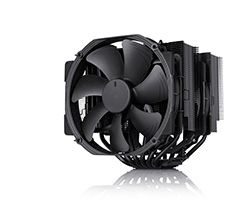My recommendation (AMD):
- Motherboard: ASUS ROG STRIX B650E-I GAMING (Newegg)
- CPU: Ryzen 7 7800X3D (Newegg)
- CPU Cooler: DeepCool LS520 SE 240mm AIO (Newegg)
- Memory: G.SKILL Flare X5 32GB (2 x 16GB) DDR5 6000 CAS 30 (Newegg)
- Storage: SN850X 2TB (Newegg) (is $10 cheaper at Best Buy at the moment)
- GPU: MSI Ventus GeForce RTX 4070 Ti (Newegg/Amazon/Best Buy)
- PSU: Corsair SF750 Platinum (SFX) (Newegg)
- PSU Alternate: Corsair SF850L (SFX-L) (if you want more headroom and a built in 12VHPWR header) (Amazon)
- Case: Lian Li/DAN: A4H20 (Newegg)
- Case alternate: NR200 (Newegg **significantly cheaper than an A4H20...currently $114 at the moment and $69 only if you take advantage of the promo...a little bit larger but still much smaller by comparison to any ATX/Micro ATX**
Approximate total /w tax & shipping: $2367 (just a bit above your top end budget)
My recommendation (Intel):
- Motherboard: MSI MPG Z790I EDGE WIFI (Newegg/Amazon)
- CPU: Intel Core i5-13600K (Newegg/Amazon)
- CPU Cooler: DeepCool LS520 SE 240mm AIO (Newegg)
- Memory: G.SKILL Ripjaws S5 32GB (2 x 16GB) DDR5 6000 CAS 30 (Newegg/Amazon)
- Storage: SN850X 2TB (Newegg/Best Buy *$10 cheaper at the moment*)
- GPU: MSI Ventus GeForce RTX 4070 Ti (Newegg/Amazon/Best Buy)
- PSU: Corsair SF750 Platinum (SFX) (Newegg)
- PSU Alternate: Corsair SF850L (SFX-L) (if you want more headroom and a built in 12VHPWR header) (Amazon *$10 more than SF750*)
- Case: Lian Li/DAN: A4H20 (Newegg)
- Case alternate: NR200 (Newegg **significantly cheaper than an A4H20...currently $114 at the moment and $69 only if you take advantage of the promo...a little bit larger but still much smaller by comparison to any ATX/Micro ATX** thisshould put you right at, or just under your $2200 budget as well, even without promo code and at $114)
Approximate total /w tax & shipping: $2249 (also just a bit above your top end budget
Totally understand you have a budget, it's great to have one when doing a build, no matter how expensive/inexpensive since that interpretation is different for everyone. That being said, it's my strong opinion, that if you're spending anywhere from the $2000-2200 range that you might as well go for that "bit more" to the point it nets you parts that are conducive to being more of a "permanent slot-in" part rather than a side-grade/temp drop-in part. By that I mean that you want to go with a platform that is "young", where you're doing the least amount of upgrading as possible, and with as little amount of parts as possible if you're the type who doesn't build annually or even semi-annually.
This is why I listed two builds, in case you are very adamant about Intel, which is totally fine. The first build being an AMD platform because it's a newer socket, meaning there's more time involved to allow you to do a drop-in upgrade to the near end of the platforms life, and the 7800X3D is right there, or faster even in some regards for pure gaming than a 13700K.
Does that mean AMD is better than Intel, or vice-versa? Absolutely not, but if you are trying to get the most bang for your buck, the AMD platform is my first recommendation. LGA1700 is great, but it is irrefutably done for its life...yes we may see a Raptor Lake refresh, but it's already been heavily speculated by many to have marginal gains than existing Raptor Lake. LGA 1851 is the next socket interation for Meteor Lake, meaning if you bought Intel right now, you'd be pidgeon holed into the LGA 1700 socket and be left with little else to drop-in upgrade down the road. Not to mention that if you are going with B700 chipset, you're left with even less in terms of a "future proof" build; virtually no M.2 PCIe 5.0 support (yes I know those drives are expensive, but only because there is no demand for them
at the moment), and most of the "cheaper" B700 boards do not have PCIe 5.0 X16 as well. So if you're spending upwards for a B700 board that
does have those features, you're getting closer to a Z700 chipset...and in that case if you do step up to Z700 chipset, you're getting into AMD board territory where most of their AM5 X670(E)/B650(E) boards also feature those newer "standards".
There is no more reason, not even for Tom's Hardware, anymore to say that AMD/AM5 platform is ludicrous "simply because" of the cost of DDR5...
In terms of why the case and board is ITX? The simple truth is that many of the interfaces on ATX and even Micro ATX is in excess. Sure, you may need an additional PCIE slot for some sort of riser card (sound card, capture card etc), but many of those things can be, and are, most times better as external devices. Especially coming from the perspective of if you're trying to reuse those things in the future across not only each new PC built, but
any PC...whether that be a laptop, a friends/families PC etc. Not to mention the desktop space saved, and the biggest reason of all for ITX: you don't lose any core performance versus its larger siblings that are 2-2.5x larger cases. It's all still there in a much smaller package.
With ITX/SFF cases over the past couple years, you're no longer nearly as restricted by GPU dimensions, lack of power delivery or output from an SFX PSU, and many SFF cases can still accommodate some of the best air cooled heatsinks in the market if not be designed for slotting in an AIO and the accompanying radiator.



